News
IS THERE LIGHT IN THE THEATRE FOR CHILDREN?
Back to...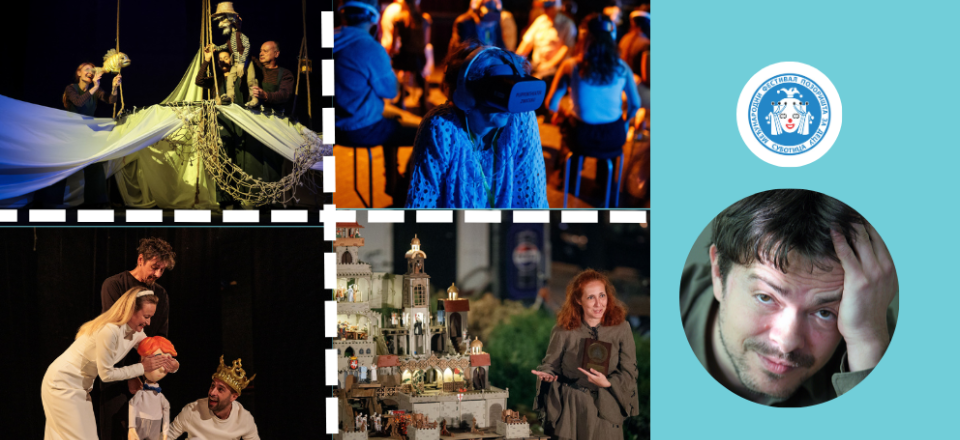
Not All That Glitters is Gold
The darkness. Children screaming with excitement. One of them is crying. I am smiling. The festival has begun!
Shortly before that, as we were watching The Gold Diggers, a play augmented with virtual reality by the German Zwickau theatre, I wasn’t smiling. I was rather reflecting.
Based on the Emanuel Geibel’s poem, The Gold Diggers is a play about a three-member posse (coming from a tribe of humans not unlike us), who find refuge from harsh conditions in an eagle's nest, on the mountaintop with a wonderful view of the blue sea/ocean. The scene depicted is straight out of the history textbook describing times in which humans were not technologically developed enough to saw and build yet.
What we, as the audience, have in common with the characters most certainly is that tiny inner-voice which, in moments of solitude, tells us what we should do in order to be happy. This premise is the basis of the play’s plot which ultimately sees the characters not only separated, but also killed – after discovering the gold and allowing greed to dominate and break their group apart.
Every fairy tale possesses such a lesson and logic. Choosing gold (instead of, for example, some exotic meal or a valuable tool) as the reason for the plot’s turmoil is a bit strange having in mind that precious metals are still a long way away from human economic reasoning. However, let us finally address the elephant in the room: virtual reality disguised as a puppet theatre. The questions are plentiful. What should we even name this format? Where is exactly the theatrical performance in this? Is it in the instructions given to the audience and interaction with technology? Or in the amazement caused by the picture, the sound and 360 degrees freedom of movement? In the absence of actors and, so to speak, theatre? Or in the way this theatrical story is realized within a new medium? Hence, many clarifications and the later discussion with the authors of the play.
The actors play as if they were on stage. A costume with a few prosthetic details – the head, the back of the body or the stomach – complements the naked human bodies reminding us that this is theatre. The worms with the puppeteers controlling them - although hidden - imply the puppet animation technique and are certainly of puppeteering nature. The stage design is virtual, but utilizing real materials, such as stone or leaves. The setting created by virtual reality is really fantastic and the viewer is literally drawn into the projected world. There is potential for further improvement by the addition of water ripples, for example through image rendering technique, I believe. Then maybe I would be enjoying the scenery more than following the story.
The Gold Diggers are performed on stage. The audience sits scattered in order to have room for free movement in their chairs. There's no real need for standing up, but it wouldn't surprise me if that becomes a possibility soon. At first - until I surrendered myself to virtual reality through goggles utilizing cutting edge technology - I was more interested in who was present at the venue or what the play was. I was wondering why are we on stage and not somewhere else, maybe even at home, cozy. Is somebody filming us? Are they going to show us how a play made from people sitting on a theatre stage watching a pre-recorded play looks like? And so on. Do you need goggles for my review? They say that today, especially for children, reading is the most difficult of tasks.
Invasion of the Barbarians
Let's return to the screaming in the dark. I myself have "screamed" quite a lot inside my head at the notion of puppet theatre in the context of virtual reality.
The Kuthi by the Estonian Triktrek Theatre is a play produced by a travelling company made of family members, as I understood. Alexander, Serafima and their son Luka are dressed as traveling actors from the Shakespearean era and - if it weren't for the metal and rubber parts on their "carriage" - I would be inclined to believe that, especially because their play is set in the same time period. A hand-crafted miniature castle - with a substructure, shops, a bakery, court entourage, tailors and seamstresses... I could go on listing more of what I thought I observed, but the truth is that the entire population of the castle is almost impossible to appreciate because it is numerous and miniature in size.
The size of the castle is just enough to allow the actors to handle its parts - around two meters wide, a meter tall and maybe a meter deep. Adding to scope of the set-piece is also the eventual introduction of the conquering army of Kuthi, the plot’s main generator. The ominous Kuthis, dressed in black uniforms, threaten to extinguish the idyllic life in the kingdom, until a young prince rises up against their leader. During the decisive battle, father and son compete in opposing roles to the soundtrack of heavy-metal music (which is otherwise dominant throughout the play). Anybody’s guess who won the battle?!
Yes, the plot is largely a cliche and the audience isn't really explained why life in the castle is so idyllic and why the Kuthi forces are evil. The motivation can always be attributed to an "ancient conflict of good versus evil" especially if we compromise that the play is set in the late Middle Age and that the guys in black are sent by a rebelled cardinal. As for the audience, it was obvious that some enjoyed the display of skill, some enjoyed the music, and the children mostly enjoyed the beads which were fired at them by catapults from the towers when the "invasion of the barbarians" began.
The Glory and Misery of Court Life
Colloquially speaking, I understand what children perceive as magical in stories about kings and queens, lavish outfits and castles, crowns, the glitter and the magic of ballroom dances. However, every now and again, I can’t help but wonder why do we - as adults - emphasize non-critically such stories today? I will forgive Subotica Children's Theatre’s for having such motifs in their production of Play with Me! mostly because I understood that the author's intentions were not to take over some established stereotypes of the past, but to metaphorically portray the parents as the royalty and each child as a prince. Therefore, I will regard the work of Tamaš Olah, Marta Bereš and Andrej Boka’s creative trio as being critical in their approach.
Play with Me! questions whether parents should be building towers and shrines for their children or is the time spent with them equally as precious. Admittedly, not to the full extent - because the values of childhood don’t always translate into adulthood and some children (even though having received all the affection in the world) cannot make ends meet later in life. Also questioned is the motive - do some parents burry themselves in work in order to escape from their families and was having children their authentic need or the product of love, social expectations and other circumstances? Not all of these questions are asked in the play staged by Subotica Children’s Theatre. The child simply fell from the heavens to its parents.
Not really from storks or drones either, as I heard that in China food is delivered by drones. In the play, the mother gets sick and dies (which, unfortunately, is a relatively common case). Because of this, the father (the king) wishes to do something praiseworthy for his son. The boy is the only puppet used in the play which might be significant. Andrej Boka did a great job in the role of director - considering the sparse conditions, the timing, the acting and the dynamic use of props. Stage, puppet and costume designer Sandra Nikač has – utilizing simple materials and a few toys - conjured up an aesthetically beautiful world of this modern fairy tale. From drama aspect, the characters of two workers (performed by Bianca Horvath and Čaba Komuveš) stole the show. Arriving by king’s invitation to build a tower that would bring king’s son closer to the stars and his mother residing among them, Bianca and Čaba portray a duo in the best sense of comedia dell'arte and slapstick comedy, popularized on screen by Stanlio and Olio and Lolek and Bolek in the cartoons. I rarely witness two actors able to create such a unique experience in a back and forth play. That was evident in their extremely dynamic interplay, without spoken lines, their every movement convincing enough as if it were real and, at the same time, so over-the-top theatrical and comical.
The World of Fairy Tales
“Initiation into the adulthood” is often the term used for the world of fairy tales that we tell or have listened to. It's a good thing that I won't go back to the premise of kings and queens, but I will to the premise of an old fisherman and the goldfish. The famous fairy tale-poem The Tale of the Fisherman and the Fish was written by Alexander Sergeyevich Pushkin and, despite its beauty and conciseness, I can't shake the impression of its misogyny. I previously mentioned the non-critical appropriation of tradition and this is a perfect example. I even tried to figure out what kind of neurosis the character of an old woman would have for her to wish upon everything she did. I realized that the only possible answer was that she lost her sense of wellbeing from extreme loneliness and poverty seasoned with the worst of all plagues – hunger as she also drove everyone involved, including herself, to their ruin. Either that or she was crazy to begin with, so her husband preferred to spend his time at sea, fishing. At least that's the modern pseudo-theory take on fishing trips. Actually, I now realize that an analysis of such a fairy tale would prove to be a very complex task. I surrender myself to the Puppet Theatre of Niš’s interpretation of the play. According to the credits, the dramatization was written by Nina Pavlović. A woman. A goldfish is also feminine. I guess. The old joke about feeding the goldfish in the aquarium always comes to mind. If he ate, then the fish is male, if she ate, then it’s a female.
The goldfish is played by Aleksandra Pavlović, a great actress and the brightest point of this play, not only because of the golden color. It was already noted at the beginning that in the darkness of the stage, not all that glitters is gold. Extremely rhythmically operating a simple, but beautifully crafted fish puppet with a single stick and the other hand holding her body, Aleksandra Pavlović convincingly represents the realm of water as the world of freedom and fulfillment of desires. Contributing to this effect is the stage design, including the beautiful and realistic-looking puppets of the Fisherman and his Old Woman, by Dušan Stanković and Dragan Breza. Before the puppetry part of the show based on the famous poem, director Vjera Vidov and the rest of the acting ensemble tried to contextualize the part of the story that I resented. However, the twist with the sailor-women, the ship and its captain who agrees to stories instead of a lunch turned out quite clumsily. Physical mise-en-scène included. Also, present are the glimpses of the so-called metanarrative - the relationship between the actor and the puppet, the actor and the prop... To be blunt, the roles are not hidden, so the mechanisms of reality and fiction merge. To me, that's a commendable aspect of the performance. Once again, I have to point out the regret that so little is being invested in the creative potential of the domestic puppetry. Critical reflections and discussions regarding funding of this aspect of culture are being reduced to an almost do-it-yourself level.
Igor Burić
Back to...-
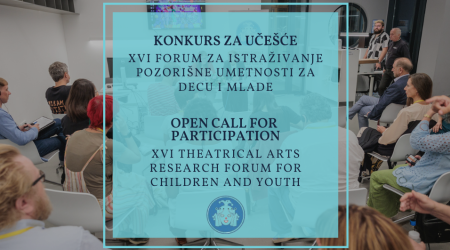 29 october 2024
29 october 2024Call for Proposals of Participants for 16th Theater Art Research Forum for Children and Youth
-
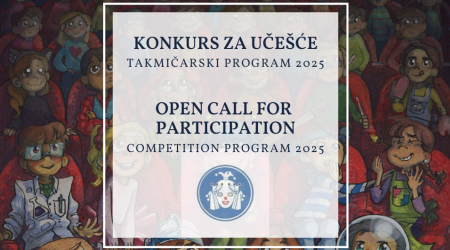 25 october 2024
25 october 2024Open call for participation in the competition programme of the 32nd Festival
-
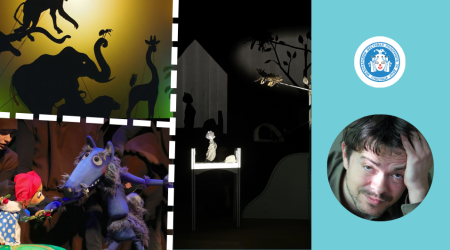 02 october 2024
02 october 2024IS THERE ANYTHING MORE BEAUTIFUL THAN THE THEATRE?
-
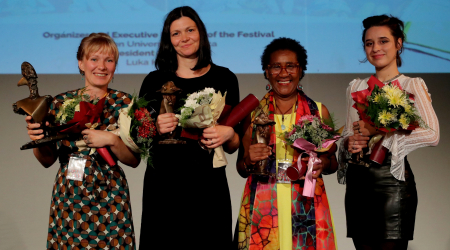 28 september 2024
28 september 2024Don’t Wait for Me… announced the best play of the 31st International Festival of Children's Theatres Subotica









